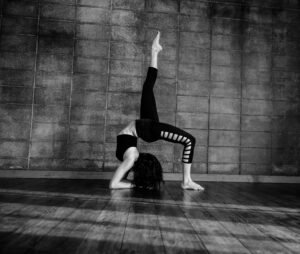Comprehensive Guide of Outdoor Photography
Overview
Outdoor photography is a captivating hobby that involves capturing images of natural landscapes, wildlife, and outdoor activities. This form of photography allows enthusiasts to explore the beauty of the natural world while honing their technical skills and artistic vision. Outdoor photographers often venture into various environments, such as mountains, forests, beaches, and urban settings, to document the changing light, seasons, and weather conditions. The hobby encourages individuals to connect with nature, appreciate their surroundings, and express their creativity through the lens of a camera. With advancements in technology, including digital cameras and editing software, outdoor photography has become more accessible, enabling hobbyists to experiment with different styles, such as landscape, macro, and wildlife photography.
History
The history of outdoor photography can be traced back to the invention of the camera in the early 19th century. Pioneers like Ansel Adams and Edward Weston played significant roles in establishing landscape photography as an art form, particularly in the American West. Their work emphasized the importance of natural preservation and inspired the conservation movement. As photography evolved, so did the techniques and equipment used by outdoor photographers. The introduction of color film in the mid-20th century allowed for more vibrant and dynamic images, while digital photography in the late 20th century revolutionized the field, making it easier to capture and edit photos. Today, outdoor photography continues to thrive, with a growing community of enthusiasts sharing their work through social media and online platforms.
Popularity and Demographics
Outdoor photography has gained immense popularity among diverse demographics, appealing to individuals of all ages and backgrounds. According to recent surveys, a significant percentage of photography enthusiasts engage in outdoor photography, with many participating in workshops, clubs, and online communities. This hobby is particularly popular among millennials and Gen Z, who often share their experiences and images on social media platforms like Instagram and Facebook. The rise of smartphone photography has also contributed to the accessibility of outdoor photography, allowing more people to capture and share their adventures. Additionally, outdoor photography is often linked to other interests, such as hiking, travel, and environmental conservation, further expanding its appeal and fostering a sense of community among enthusiasts.
Sponsored Hobbyists and Vendors
Become a Sponsor!
Affiliate Disclaimer: Throughout some sections below, Hobby Spotlight may suggest some tools, equipment or material using affiliate links. By purchasing any of those items, Hobby Spotlight may earn a small commission. This helps fund our website, content and services without directly charging our users.
Getting Started
Essential Photography Equipment:
Beginner
- DSLR Camera: A basic DSLR camera for outdoor photography.
- Tripod: A sturdy tripod to stabilize your camera for clear shots.
- Camera Lens Cleaning Kit: Essential tools for keeping your camera lens clean.
- Memory Card: A high-capacity memory card for storing photos.
- Camera Bag: A protective bag to carry your camera and accessories.
Intermediate
- Polarizing Filter: A filter to reduce glare and enhance colors in outdoor photography.
- External Flash: An external flash for better lighting in various conditions.
- Lens Hood: A lens hood to prevent lens flare and improve image quality.
- Photography Backpack: A specialized backpack for carrying camera gear comfortably.
- Editing Software: Software for editing and enhancing your photographs.
Basic Requirements and Initial Setup:
- Camera Equipment: A quality camera, whether a DSLR, mirrorless, or even a smartphone with a good camera, is essential. Lenses with varying focal lengths can enhance your ability to capture different scenes.
- Tripod: A sturdy tripod is crucial for stabilizing your camera during long exposures or in low-light conditions, ensuring sharp images.
- Weather Protection: Depending on your location, having weather-resistant gear or protective covers for your camera can help you shoot in various conditions without damaging your equipment.
Fundamental Skills to Learn:
- Composition: Understanding the rule of thirds, leading lines, and framing can significantly enhance the visual appeal of your photographs.
- Exposure Settings: Mastering ISO, aperture, and shutter speed allows you to control the amount of light entering the camera, affecting the brightness and depth of field.
- Lighting Techniques: Learning to work with natural light, including the golden hour and harsh midday sun, can dramatically improve your outdoor shots.
- Post-Processing: Familiarity with software like Adobe Lightroom or Photoshop helps in enhancing your images and correcting any issues after the shoot.
- Subject Awareness: Developing an eye for interesting subjects, whether landscapes, wildlife, or people, is key to capturing compelling photographs.
Sub-Hobby/Common Activities:
- Landscape Photography: Capturing the beauty of natural scenes, including mountains, forests, and oceans, often focusing on composition and lighting.
- Wildlife Photography: Involves photographing animals in their natural habitats, requiring patience and knowledge of animal behavior.
- Macro Photography: Focusing on small subjects like insects or flowers, revealing intricate details that are often overlooked.
- Astrophotography: Capturing celestial events and night skies, requiring specific techniques and equipment to handle low light conditions.
- Travel Photography: Documenting experiences and cultures while traveling, often combining elements of landscape, portrait, and street photography.
Terminology:
- Aperture: The opening in a lens that controls the amount of light reaching the camera sensor, affecting exposure and depth of field.
- ISO: A measure of the camera sensor’s sensitivity to light; higher ISO settings allow for shooting in lower light but can introduce noise.
- Shutter Speed: The duration for which the camera’s shutter is open, influencing motion blur and exposure.
- Depth of Field: The range of distance within a photo that appears sharp; controlled by aperture settings.
- Golden Hour: The period shortly after sunrise or before sunset when the light is soft and warm, ideal for photography.
- Composition: The arrangement of elements within a photograph, crucial for creating visually appealing images.
- Exposure Triangle: The relationship between aperture, shutter speed, and ISO, which determines the exposure of an image.
- White Balance: Adjusting the colors in a photo to ensure that whites appear neutral, affecting the overall color tone.
- Histogram: A graphical representation of the tonal values in an image, helping photographers assess exposure levels.
- Focal Length: The distance between the lens and the image sensor, affecting the magnification and perspective of the photograph.
Advanced Topics and Specializations
Advanced Tools and Equipment:
- Full-Frame DSLR Camera: A high-end camera that offers superior image quality, low-light performance, and advanced features for professional photography.
- Professional Tripod: A sturdy and adjustable tripod designed to support heavy cameras and provide stability for long exposure shots.
- High-Quality Lens: Interchangeable lenses with wide apertures and specialized focal lengths for capturing stunning images in various conditions.
- External Flash Unit: A powerful flash that provides additional lighting options for outdoor photography, enhancing image quality in low-light situations.
- Camera Backpack: A durable and spacious backpack designed to safely carry camera gear, lenses, and accessories while on outdoor shoots.
Advanced Projects and Achievements:
- Landscape Photography Portfolio: Curating a collection of stunning landscape images that showcase diverse environments, from mountains to beaches, highlighting the beauty of nature.
- Wildlife Photography Expedition: Capturing rare and candid moments of wildlife in their natural habitats, focusing on behavior and interaction within ecosystems.
- Night Sky Photography: Mastering techniques to photograph celestial events, including star trails and the Milky Way, using long exposure and specialized equipment.
Advanced Techniques and Methods:
- Long Exposure Techniques: Utilizing slow shutter speeds to create ethereal effects in water and clouds, enhancing the mood of landscape images.
- Focus Stacking: Combining multiple images taken at different focus distances to achieve a greater depth of field in macro photography.
- HDR Imaging: Merging multiple exposures to capture a wider dynamic range, allowing for detailed highlights and shadows in challenging lighting conditions.
Specializations and Niche Areas:
- Macro Photography: Focusing on extreme close-ups of small subjects, revealing intricate details often overlooked by the naked eye.
- Adventure Photography: Documenting outdoor activities such as hiking, climbing, and kayaking, capturing the thrill and beauty of adventure sports.
- Travel Photography: Combining cultural exploration with photography, showcasing the essence of different places through their landscapes, people, and traditions.
- Astrophotography: Specializing in capturing astronomical objects and phenomena, including planets, stars, and galaxies, often requiring specific equipment and techniques.
- Environmental Portraits: Blending portrait photography with natural settings to tell stories about individuals in their environments.
Future Trends and Innovations:
- Increased use of drones for aerial photography, providing unique perspectives and access to hard-to-reach locations.
- Advancements in camera technology, including improved sensors and AI-driven features for enhanced image quality and ease of use.
- Growing interest in sustainable photography practices, focusing on conservation and responsible interaction with nature.
- Integration of augmented reality (AR) in photography apps, allowing users to visualize compositions and settings before shooting.
- Emergence of online communities and platforms for sharing and critiquing outdoor photography, fostering collaboration and learning.
Technology Integration:
- Smart Cameras: Cameras equipped with Wi-Fi and Bluetooth capabilities for easy sharing and remote control via smartphones.
- Photo Editing Software: Advanced tools that utilize AI to enhance images, streamline workflows, and provide creative editing options.
- Cloud Storage Solutions: Services that allow photographers to back up and access their work from anywhere, ensuring data security and convenience.
- Mobile Photography Apps: Applications that offer editing, organization, and sharing features tailored for photographers on the go.
- Virtual Reality (VR) Experiences: Creating immersive environments for viewers to experience photography in a new and engaging way.
Further Learning and Resources
Books:
- Understanding Exposure by Bryan Peterson: This book provides clear explanations of the fundamental concepts of exposure, making it accessible for beginners looking to improve their outdoor photography skills.
- The Digital Photography Book by Scott Kelby: A straightforward guide that covers essential tips and techniques for taking great outdoor photos, tailored for those just starting out.
- The Art of Outdoor Photography by Michael Gordon: This book delves into advanced techniques and artistic approaches to outdoor photography, ideal for those looking to elevate their skills.
- Photographing the World by Scott Kelby: A comprehensive guide that explores advanced techniques for capturing stunning outdoor landscapes, perfect for experienced photographers.
- The Landscape Photography Workshop by David Hay: This book offers in-depth workshops and advanced strategies for landscape photography, focusing on both technical skills and creative vision.
Websites:
- Outdoor Photographer, https://www.outdoorphotographer.com – A leading magazine and website dedicated to outdoor photography, featuring tips, techniques, and stunning photo galleries.
- National Geographic Photography, https://www.nationalgeographic.com/photography – Offers breathtaking photography, articles, and resources for aspiring outdoor photographers.
- DPReview, https://www.dpreview.com – A comprehensive resource for camera reviews, photography news, and forums for outdoor photography enthusiasts.
- Fstoppers, https://www.fstoppers.com – A photography blog that provides tutorials, gear reviews, and inspiration for outdoor photographers.
- 500px, https://www.500px.com – A photography community where photographers can showcase their work, get feedback, and find inspiration from outdoor photography.
Courses:
- Outdoor Photography Masterclass, https://www.udemy.com/course/outdoor-photography-masterclass – A comprehensive course covering techniques for capturing stunning outdoor images, suitable for beginners and advanced photographers.
- Photography Basics: Outdoor Photography, https://www.skillshare.com/classes/Photography-Basics-Outdoor-Photography/123456 – An introductory course focusing on the fundamentals of outdoor photography, perfect for beginners.
- Mastering Landscape Photography, https://www.masterclass.com/classes/mastering-landscape-photography – Learn advanced techniques for capturing breathtaking landscapes from professional photographers.
- Creative Outdoor Photography Techniques, https://www.coursera.org/learn/creative-outdoor-photography – A course that explores creative approaches to outdoor photography, suitable for intermediate to advanced photographers.
- Wildlife Photography Workshop, https://www.nationalgeographic.com/photography/workshops – An immersive workshop focusing on wildlife photography techniques, led by experienced photographers in the field.
Content Creators and Community
Content Creators:
- Peter McKinnon (YouTube): A renowned photographer and filmmaker, Peter shares tips on outdoor photography, gear reviews, and creative techniques, inspiring millions with his stunning visuals and engaging storytelling.
- Thomas Heaton (YouTube): Focuses on landscape photography, sharing his adventures in the great outdoors while providing valuable insights on composition, lighting, and post-processing.
- Chris Burkard (Instagram): An acclaimed outdoor photographer known for his breathtaking images of nature and adventure, Chris shares his experiences and techniques through captivating visuals and storytelling.
- Mango Street (YouTube): A duo that provides practical photography tips and tutorials, focusing on outdoor photography techniques and creative projects.
- Benjamin Hardman (Instagram): Specializes in capturing the beauty of remote landscapes, sharing his unique perspective and techniques for outdoor photography.
Online Forums and Social Media Groups:
- Reddit – /r/photography: A vibrant community for photographers to share their work, seek advice, and discuss techniques related to outdoor photography.
- Facebook Outdoor Photography Groups: Various groups where enthusiasts share their photos, tips, and experiences in outdoor photography.
- Outdoor Photography Community (Discord): An interactive platform for live discussions, photo critiques, and sharing resources among outdoor photography enthusiasts.
- Instagram Hashtags (#outdoorphotography, #landscapephotography): Follow trending outdoor photography posts for inspiration and to connect with other photographers.
- Pinterest Boards: Explore a variety of outdoor photography ideas, tips, and techniques curated by passionate photographers.
Local Clubs and Organizations:
- Photography Clubs: Many communities have local photography clubs that organize outings, workshops, and photo critiques focused on outdoor photography.
- Local Nature Centers: Often host photography workshops and events that encourage capturing the beauty of local landscapes and wildlife.
- Community Colleges: Frequently offer photography courses that include outdoor shooting sessions and field trips.
- Meetup Groups: Platforms like Meetup.com host local outdoor photography groups for enthusiasts to connect and share experiences.
- Nature Photography Associations: Organizations that provide resources, competitions, and networking opportunities for outdoor photographers.
Events, Meetups, and Conventions:
- Outdoor Photography Workshops: Various organizations host workshops in scenic locations, providing hands-on learning experiences with professional photographers.
- Photography Exhibitions: Events showcasing outdoor photography, allowing photographers to display their work and connect with others in the field.
- Nature Festivals: Many festivals feature photography contests, workshops, and opportunities to learn from experienced outdoor photographers.
- Photo Walks: Organized events where photographers gather to explore and capture local landscapes together, often led by experienced guides.
- Photography Conventions: Large events that include seminars, workshops, and networking opportunities for photographers of all levels, with a focus on outdoor photography.
Associated Hobbies
- Nature Walks: Exploring natural landscapes provides photographers with opportunities to capture stunning images of flora and fauna, enhancing their skills in outdoor photography.
- Wildlife Observation: Many outdoor photographers develop an interest in observing and photographing wildlife, which requires patience and knowledge of animal behavior to capture the perfect shot.
- Traveling: Outdoor photography often inspires travel to various locations, allowing photographers to experience different environments and cultures while capturing breathtaking landscapes.
- Editing and Post-Processing: Learning to edit photos using software like Adobe Lightroom or Photoshop can become a hobby in itself, as photographers enhance their images and develop their unique style.
- Landscape Painting: Some outdoor photographers also enjoy painting landscapes, using their photographs as references to create artistic interpretations of the scenes they capture.
- Photography Workshops: Participating in workshops can help photographers improve their skills, learn new techniques, and connect with other photography enthusiasts.
- Blogging or Vlogging: Many outdoor photographers share their experiences and tips through blogs or vlogs, creating a community and inspiring others to explore outdoor photography.
- Environmental Conservation: Outdoor photographers often become advocates for nature conservation, using their images to raise awareness about environmental issues and promote the protection of natural habitats.
Cost and Budgeting
Initial Investment and Ongoing Costs:
- Initial Investment: The cost to start outdoor photography can vary significantly based on the equipment you choose. A basic setup, including a decent DSLR or mirrorless camera, a standard lens, and a tripod, can range from $500 to $1,500. For those looking to invest in higher-end gear, professional cameras and lenses can exceed $2,500.
- Ongoing Costs: Ongoing costs include memory cards, camera batteries, and maintenance for your equipment. Additionally, you may want to invest in software for photo editing, such as Adobe Lightroom or Photoshop, which typically requires a monthly subscription fee. Travel expenses for outdoor shoots, including gas and accommodation, can also add to your overall costs.
Budget-Friendly Options:
- Entry-Level Cameras: Consider starting with entry-level DSLRs or mirrorless cameras that offer good quality at a lower price point, often available for under $500.
- Smartphone Photography: Many smartphones today have excellent cameras, making them a budget-friendly option for outdoor photography without the need for additional equipment.
- Free Editing Software: Utilize free photo editing software like GIMP or mobile apps like Snapseed to enhance your photos without incurring additional costs.
Where to Buy:
- Local Camera Shops: These shops often provide personalized service and advice, allowing you to test equipment before purchasing.
- Online Retailers: Websites like B&H Photo, Adorama, and Amazon offer a wide range of photography equipment, often at competitive prices, with user reviews to help guide your choices.
- Second-Hand Marketplaces: Platforms like eBay, Facebook Marketplace, and KEH specialize in used photography gear, allowing you to find quality equipment at reduced prices.
Money Making
How to Turn Outdoor Photography into a Profession or Side Hustle:
- Freelance Photographer: Offer your services as a freelance outdoor photographer for events, weddings, or corporate functions. Build a portfolio showcasing your best work in natural settings to attract clients looking for unique and stunning imagery.
- Stock Photography Sales: Create high-quality outdoor photographs and sell them on stock photography websites. This allows you to earn passive income as your images are purchased by businesses, bloggers, and marketers for their projects.
- Outdoor Photography Workshops: Share your expertise by conducting workshops for aspiring photographers. Teach them about composition, lighting, and techniques specific to outdoor photography. You can host these workshops in scenic locations, providing hands-on experience.
- Travel Blogging: Combine your love for outdoor photography with travel by starting a blog. Document your adventures and share your photographs, tips, and experiences. Monetize your blog through affiliate marketing, sponsored posts, and partnerships with travel brands.
- Print Sales and Exhibitions: Create prints of your best outdoor photographs and sell them online or at local art fairs and exhibitions. Consider hosting your own gallery show to showcase your work and connect with potential buyers and art enthusiasts.
Benefits and Enjoyment
Physical, Mental, and Social Benefits:
- Physical Activity: Outdoor photography often involves hiking, walking, or climbing to reach the perfect vantage point. This physical activity can improve cardiovascular health, strengthen muscles, and enhance overall fitness.
- Mental Relaxation: Engaging in outdoor photography allows individuals to immerse themselves in nature, which can significantly reduce stress and anxiety. The focus required to capture the perfect shot can also promote mindfulness, leading to improved mental clarity and emotional well-being.
- Social Connection: Photography can be a social activity, whether through joining photography clubs, participating in workshops, or sharing experiences on social media. These interactions foster friendships and create a sense of community among enthusiasts.
Success Stories and Inspirational Examples:
- Ansel Adams: A legendary figure in outdoor photography, Ansel Adams is known for his stunning black-and-white images of the American West. His work not only inspired countless photographers but also played a significant role in the conservation movement, highlighting the beauty of nature and the importance of preserving it.
- Jimmy Chin: An accomplished climber and photographer, Jimmy Chin has gained recognition for his breathtaking images of extreme sports and adventure. His work has been featured in National Geographic, and he won an Academy Award for his documentary ‘Free Solo,’ showcasing the intersection of photography and storytelling.
- Elena Shumilova: A self-taught photographer, Elena Shumilova gained fame for her enchanting images of her children and animals in rural settings. Her ability to capture the beauty of everyday life has inspired many aspiring photographers to explore their creativity and find beauty in their surroundings.
Ways to Enjoy and Grow in the Hobby:
- Experiment with Different Techniques: Try various photography styles, such as landscape, macro, or wildlife photography. Experimenting with different techniques will enhance your skills and keep the hobby fresh and exciting.
- Join a Photography Group: Connecting with local photography clubs or online communities can provide valuable feedback, inspiration, and opportunities for collaboration. Participating in group outings or challenges can also enhance your skills and enjoyment of the hobby.
- Invest in Quality Equipment: While starting with basic gear is fine, gradually investing in quality equipment can significantly improve your photography. Consider upgrading your camera, lenses, or accessories as you grow in your skills and knowledge.
Challenges and Solutions
Common Challenges Faced by Hobbyists:
- Cost of Equipment: Outdoor photography can require a significant investment in cameras, lenses, tripods, and other accessories. This can be a barrier for beginners who may feel overwhelmed by the options and prices.
- Technical Knowledge: Understanding camera settings, lighting, and composition can be challenging for newcomers. Many hobbyists struggle to grasp the technical aspects of photography, which can hinder their ability to capture great images.
- Weather Conditions: Outdoor photography is heavily influenced by weather. Rain, snow, or extreme temperatures can limit shooting opportunities and affect the quality of photos. Photographers must be prepared to adapt to changing conditions.
- Finding the Right Locations: Identifying picturesque locations for outdoor photography can be difficult. Many photographers spend considerable time researching and scouting locations, which can be time-consuming.
Tips for Overcoming These Challenges:
- Start with Basic Gear: Invest in a good entry-level camera and lens. You don’t need the most expensive equipment to start; focus on learning the basics and gradually upgrade as you gain experience.
- Learn Through Practice: Take the time to practice and experiment with different settings and techniques. Online tutorials, photography classes, and workshops can also help improve your skills.
- Check Weather Forecasts: Stay informed about weather conditions and plan your shoots accordingly. Use weather apps to find the best times for outdoor photography, and be flexible with your schedule.
- Utilize Online Resources: Use photography forums, social media groups, and websites to discover popular photography locations. Engaging with other photographers can provide valuable insights and inspiration.
Safety Considerations and Best Practices:
- Always inform someone about your photography plans, especially if you’re heading to remote locations.
- Wear appropriate clothing and footwear for the environment, and be prepared for changes in weather.
- Carry a first aid kit and know basic first aid procedures in case of emergencies.
- Be aware of your surroundings, including wildlife and natural hazards, to ensure your safety while shooting outdoors.
- Respect nature and local regulations by staying on marked trails and not disturbing wildlife or their habitats.
Conclusion and Encouragement
Recap of Key Points:
- Outdoor photography allows you to capture the beauty of nature, from stunning landscapes to intricate details of flora and fauna, providing endless opportunities for creativity.
- Understanding the basics of photography, such as composition, lighting, and camera settings, is essential for taking high-quality images that truly reflect the beauty of your surroundings.
- Investing in the right equipment, including a good camera and lenses, can significantly enhance your outdoor photography experience, but great photos can also be taken with smartphones.
- Outdoor photography encourages you to explore new locations, fostering a deeper appreciation for nature and the environment while promoting physical activity and mental well-being.
- Sharing your work through social media or photography communities can provide valuable feedback, inspire others, and even lead to opportunities for collaboration and growth in your skills.
Encouragement to Start and Enjoy Outdoor Photography:
- Outdoor photography is accessible to everyone, regardless of skill level. Grab your camera or smartphone, head outside, and start capturing the world around you.
- It’s a wonderful way to disconnect from technology and immerse yourself in nature. The process of observing and photographing can be meditative and rejuvenating.
- Joining local photography groups or online communities can enhance your experience, providing support, inspiration, and opportunities to learn from fellow enthusiasts.
Final Tips and Motivational Thoughts:
- Always be patient and take your time when photographing. The best shots often come when you least expect them, so allow yourself to explore and wait for the perfect moment.
- Experiment with different techniques and styles. Don’t be afraid to step out of your comfort zone; trying new things can lead to unexpected and rewarding results.
- Remember to enjoy the journey of outdoor photography. Celebrate your progress, learn from your mistakes, and most importantly, have fun capturing the beauty of the world around you.

















